|
BULB LOG 37 --- 16th September 2007

Colchicum byzantium album
While I was down in England last weekend speaking about Erythronium and Fritillaria, I was staying with Rod and Jane Leeds who are among the best growers of bulbs in the country. During my stay I found out that this Colchicum that I have always known as C. byzantium album has been given the name C. 'Innocence' at Chris Brickell's suggestion. It is almost a pure white form except there is a tiny spot of purple at the tip of each petal and on the end of the style. As you can see on one of the floral segments the purple has run down giving it a stripe and it is not unusual to see varying degrees of purple appearing in these flowers from year to year.
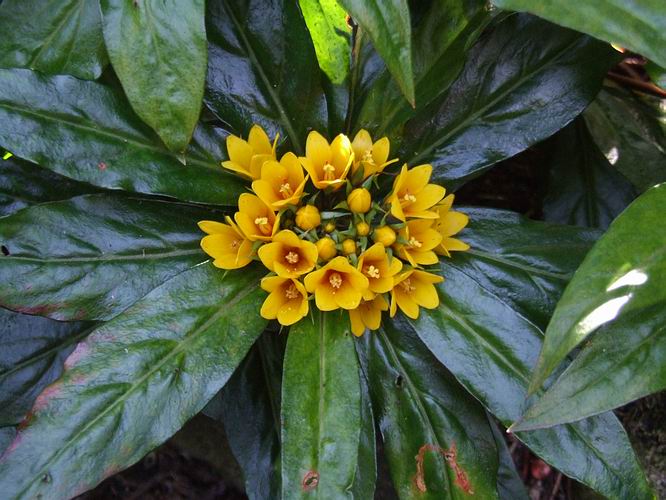
Lysimachia paridiformis ssp stenophylla
In case you were wondering about the plant/leaves which Colchicum 'Innocence' is growing through, it is a rather rare Lysimachia; L. paridiformis ssp stenophylla. The seed of this plant was collected about 15 or more years ago in China by Mikinori Ogisu, he sent them to Roy Lancaster who sent them on to us to sow. We raised a reasonable number most of which we sent back down to Roy and we kept three plants for our selves. It is a good grower with nice foliage and a lovely cluster of bright yellow flowers in late summer. It has never set seed for us in the North but I do believe they have had seed from it in England - it can be increased by cuttings taken in autumn which will root fairly readily over the winter. I should point out that it is not a bulb but I thought you might be interested. Find out more about this plant here

Cyclamen coum seeds soaked
Among the plants Rod and Jane have growing in great profusion in their garden are cyclamen and I was bemoaning the fact that I am still trying to establish forms of Cyclamen coum that will do well in our garden. As I was leaving I was given a box of goodies which included a very large paper packet of Cyclamen coum seeds. As soon as I got home I transferred them into a plastic bag and added some water and the smallest amount of soap to break down the surface tension. After twenty four hours the dried shrivelled seeds had absorbed the moisture and looked as plump as they were when they were harvested.
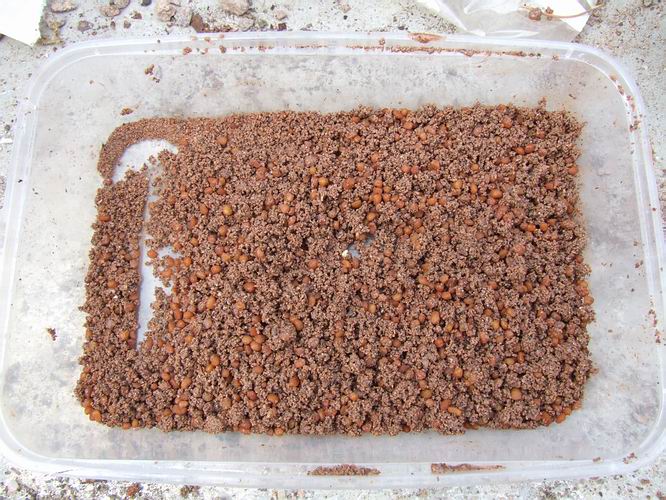
Cyclamen coum seeds in sand
I tipped them into a sieve and washed them well to remove any traces of the soap and any other coating that might inhibit germination then they were mixed with dry sand- the sand stops them sticking together and makes it easy to sow them. I sowed them directly into the gravel areas in several parts of the garden where I want to establish them; now I will wait and watch.
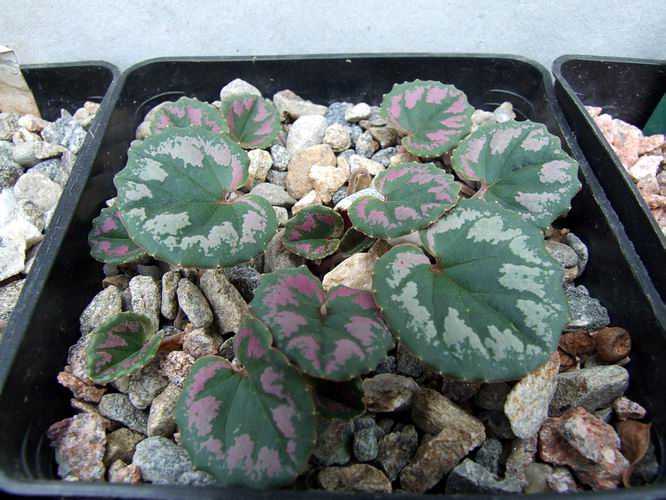
Cyclamen mirabile leaves
While on the subject, if I had to choose just one Cyclamen species as my favourite I think it would have to be Cyclamen mirabile, especially the forms that produce these wonderful pink markings on the emerging leaves.
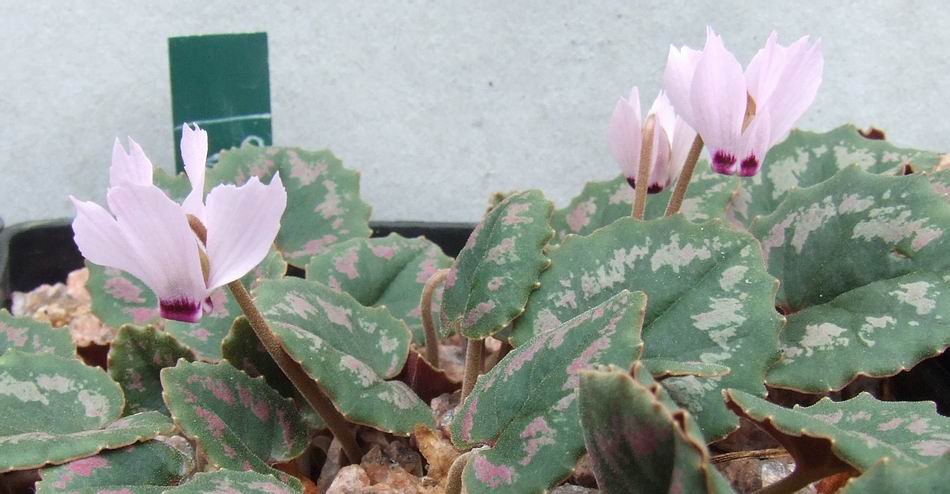
Cyclamen mirabile
The tiny flowers are perfectly matched as they sit just clear of the foliage.
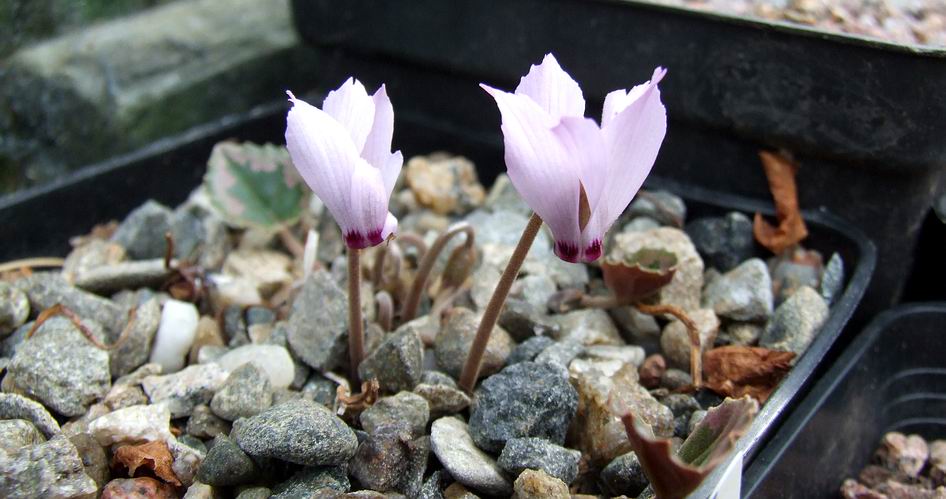
Cyclamen mirabile flowers
Some forms produce their flowers just before the leaves appear but I much prefer it when the leaves form a background for the delicate beauty of the flowers.
I do not think these will be the only pictures of Cyclamen mirabile I show in this year's bulb log.
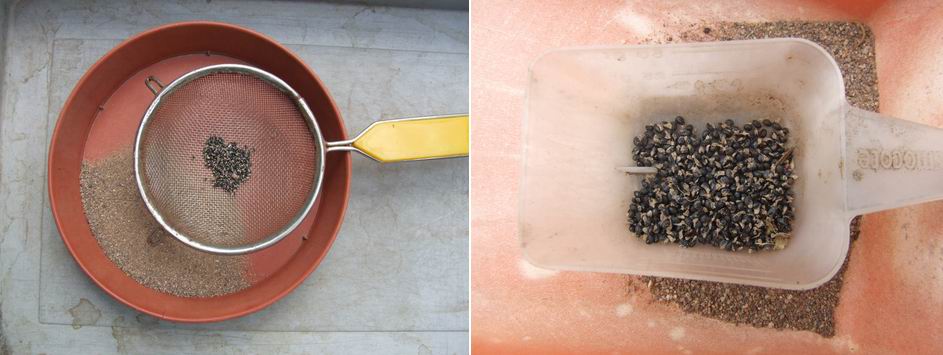
Narcissus seed in sand
Back to seeds - having given the bulbs their first storm my task over the next few weeks is to get all my bulb seeds sown and watered in well. Above are some of the narcissus seeds, that I stored in dry sand, emptied into a sieve to separate out the sand from the seeds. You could just sow the sand and seeds together but I like to see the condition of the seeds and I am sure you can see that they are looking good and not too shrivelled up as they would have done if they were just stored in a paper packet surrounded by air.
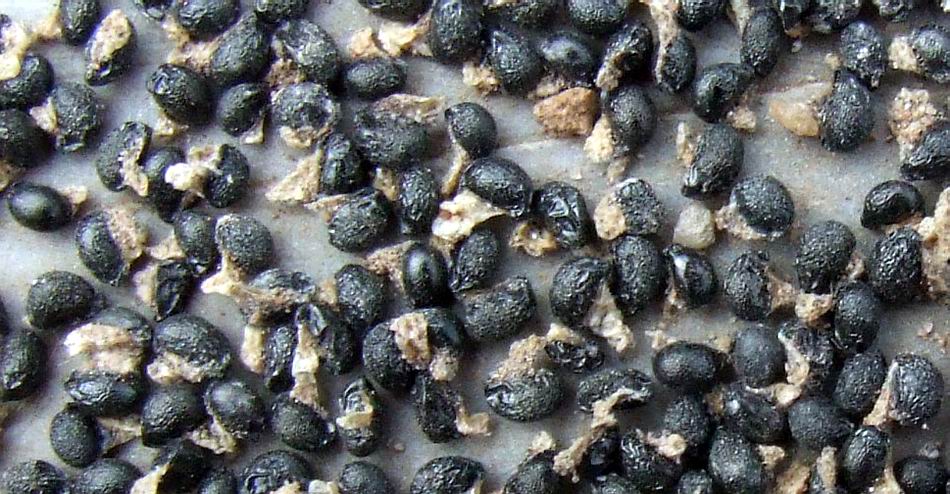
Narcissus seeds
As I have mentioned previously, storing the seeds in this way is the nearest I can get to what would happen in nature when the seeds are shed onto a warm dry ground from where, if they are fortunate, they are taken under ground by ants to a stable dry environment to wait for the autumn thunder storms and the rains.
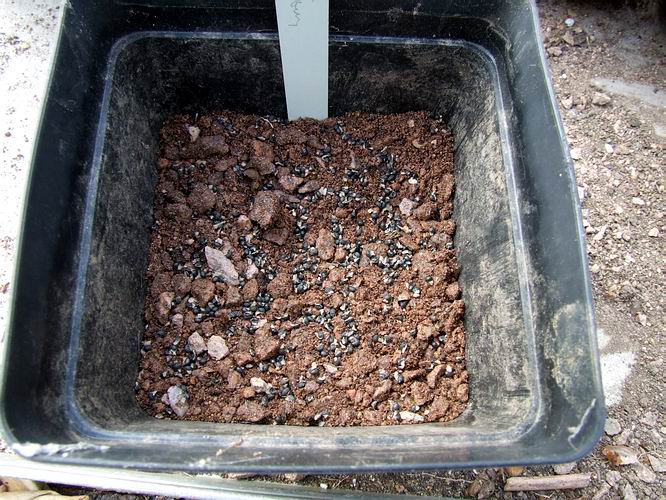
Narcissus seeds sown
Also to remind you that I sow my narcissus seeds deeply - at least half way down a pot: I suppose you could say that I am performing the duties of an ant - I wish I were that organised.
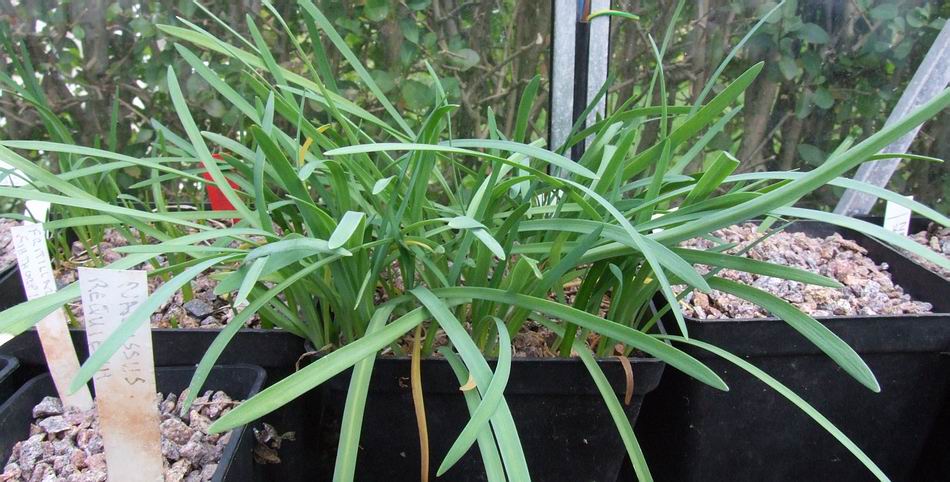
Ipheion leaves
Although the leaves of this Ipheion were already showing before I watered the bulbs, since the flood they have grown significantly and are the most advanced of all the bulbs. Many other pots are showing the very first signs of growth just poking through the gravel and as the days shorten and the temperatures fall I am looking forward to lots of flowers from the bulbs.

Acis roseum
The first few Acis roseum formerly called Leucojum: we now have to decide if Acis is pronounced with a hard or a soft 'c' . It is a pretty wee flower with beautiful pink crystalline petals when you look at it closely and it is very deserving of space in the bulb house as it get swamped out in the garden.
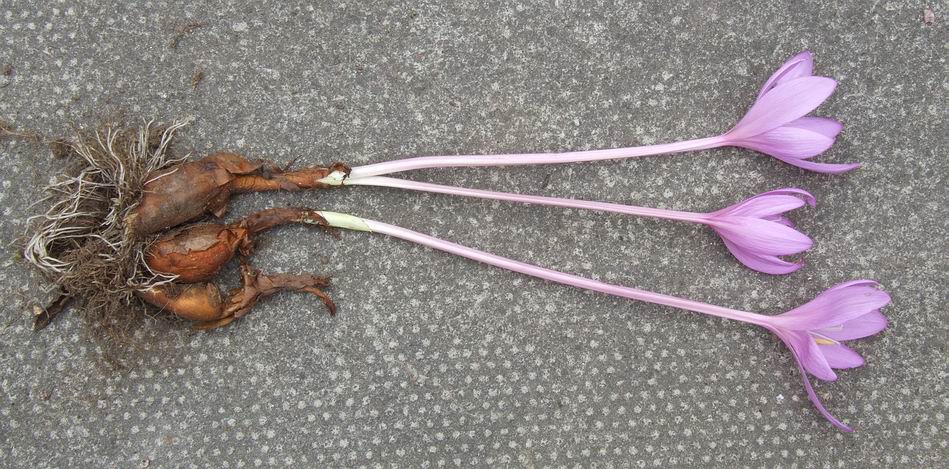
Colchicum 'Glory of Holland'
I found this neglected pot which had not been re-potted for a few years, flowering in a frame. When I lifted it up I discovered that the hedge roots had penetrated the drainage holes and were plundering the nutrition from the bone meal and the leafmould. This is a common problem here as many of our frames are adjacent to the hedges round our boundaries but it does show me that I am getting a good balance in my compost as the hedge finds it very desirable. There are some benefits to the invading hedge roots in that they help use up any surplus moisture if we get a wet summer when the bulbs are dormant and want to be dry - I just have to keep on top of it and repot at least every second year to prevent the hedge robbing the bulbs when they want to grow. Back to the colchicum which I carefully re-potted back into nice fresh compost without any harm being done to its fairly extensive new root system.
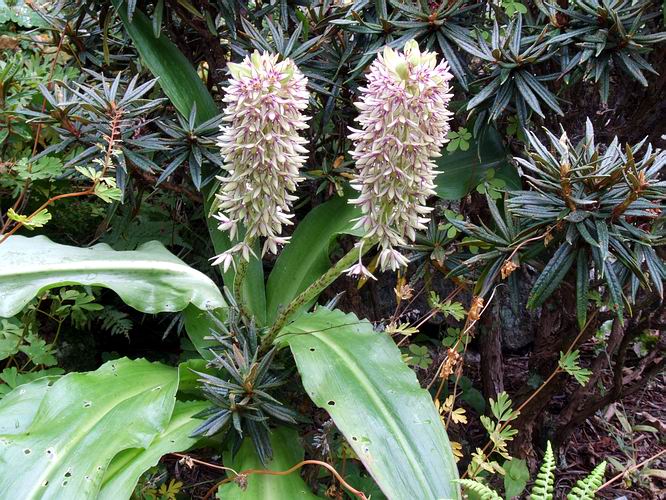
Eucomis bicolour
Finally for this week here is Eucomis bicolour looking very happy with two good flower spikes. We grow this and E. autumnalis successfully and having seen pictures of some other lovely cultivars and species appearing on the forum I am keen to get hold of and try, more. I am sure they will be hardy most years and they do produce flowers in late summer just before the colchicums appear.
^ back to the top ^
|

